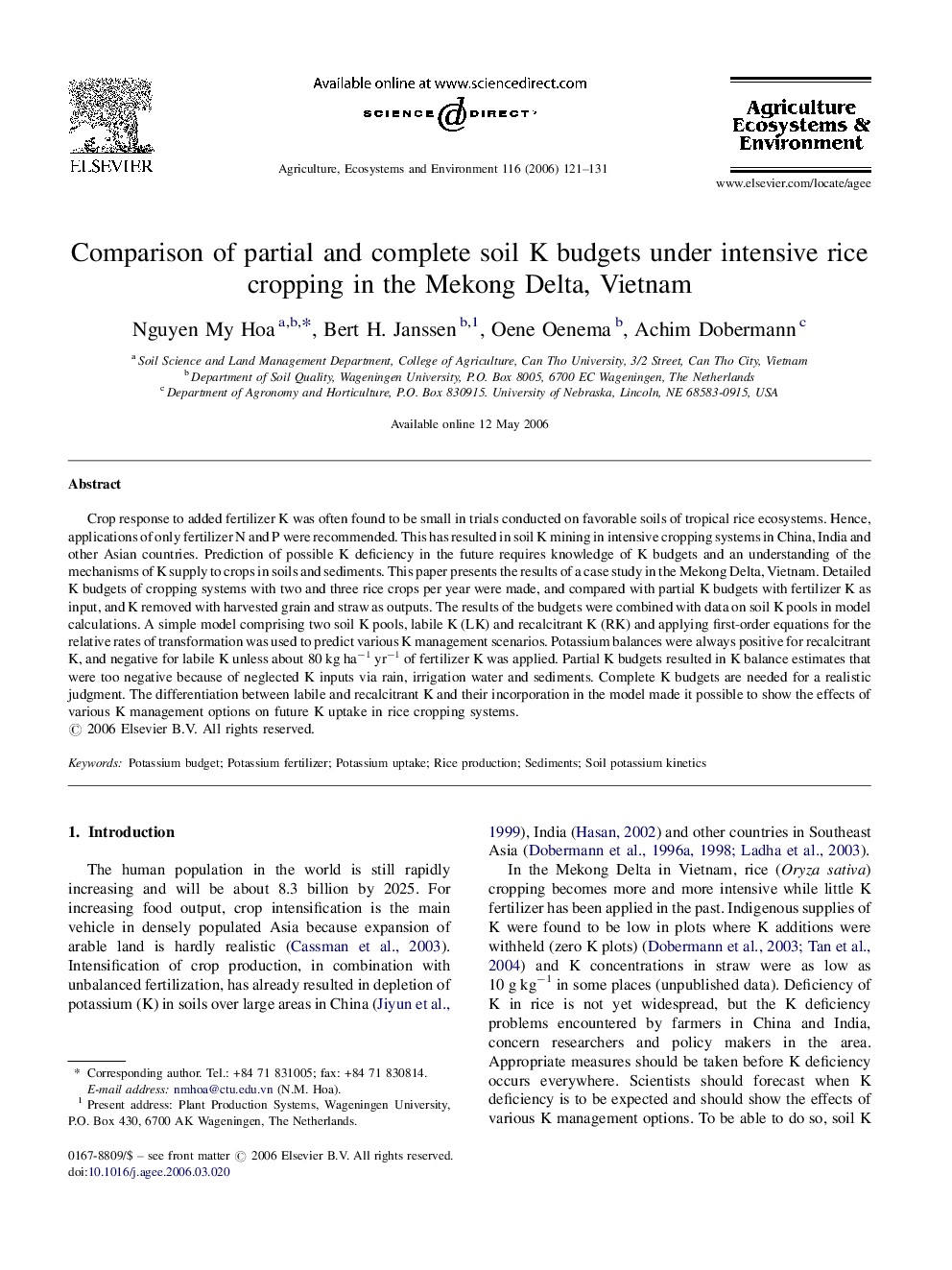| Article ID | Journal | Published Year | Pages | File Type |
|---|---|---|---|---|
| 2416012 | Agriculture, Ecosystems & Environment | 2006 | 11 Pages |
Crop response to added fertilizer K was often found to be small in trials conducted on favorable soils of tropical rice ecosystems. Hence, applications of only fertilizer N and P were recommended. This has resulted in soil K mining in intensive cropping systems in China, India and other Asian countries. Prediction of possible K deficiency in the future requires knowledge of K budgets and an understanding of the mechanisms of K supply to crops in soils and sediments. This paper presents the results of a case study in the Mekong Delta, Vietnam. Detailed K budgets of cropping systems with two and three rice crops per year were made, and compared with partial K budgets with fertilizer K as input, and K removed with harvested grain and straw as outputs. The results of the budgets were combined with data on soil K pools in model calculations. A simple model comprising two soil K pools, labile K (LK) and recalcitrant K (RK) and applying first-order equations for the relative rates of transformation was used to predict various K management scenarios. Potassium balances were always positive for recalcitrant K, and negative for labile K unless about 80 kg ha−1 yr−1 of fertilizer K was applied. Partial K budgets resulted in K balance estimates that were too negative because of neglected K inputs via rain, irrigation water and sediments. Complete K budgets are needed for a realistic judgment. The differentiation between labile and recalcitrant K and their incorporation in the model made it possible to show the effects of various K management options on future K uptake in rice cropping systems.
